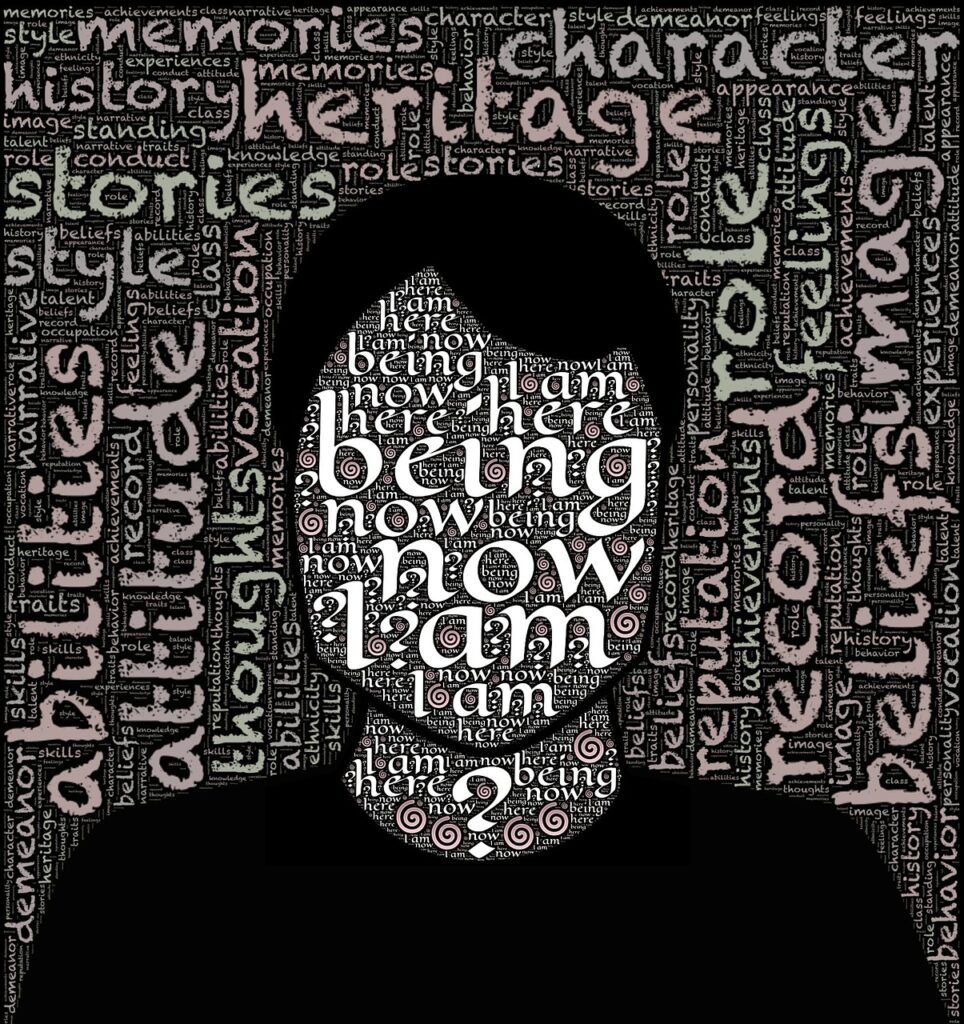Am I my brain? Where in my brain?
Excerpt from the book “Spirit call Nature”

The traditional materialist view was that the physical processes that lead to a mental state and a subjective experiential awareness had to be localized in one or a few areas of the brain responsible for its ‘generation’. These views soon had to be proven wrong and had to give way to much more complicated conjectures. There is no evidence, not even indirect or circumstantial, of a single little brain region, area, organ, anatomical feature, or Cartesian pineal gland that seems to take charge of this mysterious job of ‘producing’ or ‘generating’ consciousness. Most of the brain is busy processing sensory inputs, motor tasks, and automatic and sub- and/or unconscious physiological regulation.
However, according to the current wisdom, since the ‘prefrontal cortex’ (the front part of the front lobe–in short, the brain region behind your eyebrows) is responsible for cognitively complex functions, such as thought, language, decision-making, and social behavior, it is considered the ideal candidate for the ‘seat of consciousness’. In fact, one of the points which may have not received enough attention is the quite obvious fact that neural activity alone can’t be a sufficient condition to lead to a subjective phenomenal experience. Most of the brain’s workings do not lead to qualitative experiences. Fortunately, the vast majority of things a brain does are unconscious–that is, purely mechanical and automatic–and can completely escape our awareness (think of your heartbeat, your breathing, the control of blood pressure and temperature, motor control, etc.). If the materialist’s ideology is correct, this raises the question: What distinguishes a neural process that leads to a conscious experience from that which does not?
For example, the ‘cerebellum’, the posterior area at the lower back of your brain, is almost exclusively dedicated to motor control functions, and its impairment leads to equilibrium and movement disorders. However, it does not affect one’s state of consciousness. Its role in ‘generating’ experience seems to be marginal, if any. There are, of course, lots of anatomical and microbiological differences that distinguish the rest of the brain from the cerebellum, such as the size of the neurons and its biochemical properties and electrical behavior. However, why this is supposed to lead to a conscious experience in one case and not in the other remains a question about which science has nothing to say. There are also rare cases of people who live without any cerebellum at all (a clinical condition called ‘cerebellar agenesis’) and have only mild or moderate motor deficits or other types of disorders which do not prevent them from conducting a relatively normal life and continuing to be a one and undivided self, that which people call ‘being oneself’. This is a fact that confirms the brain’s proverbial ‘neuro-plasticity’, which we will see next through other extraordinary examples.
It may be worth recalling that the neuronal architecture in our bodies is not confined in the brain–that is, it goes far beyond our heads, through the brain stem and down through the spinal cord. The ‘central nervous system’ is made up of the brain and the spinal cord. The latter is responsible for the transmission of nerve signals from and to the motor cortex and, as is well known, injuries can result in paralysis. But, again, no cognitive deficit or state of consciousness is altered by impairments of the spinal cord. This leaves only one option: If there is a ‘seat of consciousness’, it must be identified somewhere in the cerebral cortex or subcortical areas of the brain.
[snip]
Therefore, from the physicalist point of view, the old mind-body quest for localizing a phenomenal experience which ‘generates’ a mind with a self in a localized neural correlate of consciousness remains elusive. Identifying it in a gland, a cerebellum, or a spinal cord seems to not be a tenable hypothesis.
However, if there is not one single ‘seat of consciousness’, could it be that the combination and activity of some or all the different brain areas do ‘produce’ the subjective experience? It would seem plausible that if consciousness arises from the activity of a complex aggregation of neurons, it could be something distributed among a wider brain region and may not be the epiphenomenal appearance of only one localized region. For example, one could conjecture that to ‘generate’ consciousness, at least some brain areas must work together in a unified whole via thalamic activity. From this perspective, the thalamus function is to ‘integrate’ the information flow of the several brain areas and, if disrupted, consequently lead to a ‘loss’ of consciousness.
This, however, would also suggest that, if someone were to split your brain into two parts, and you survived, you would presumably feel somewhat less ‘yourself you’. Right?
Some might be surprised to learn that this is not a thought experiment taken from a Frankenstein novel, but a very real surgical procedure performed since the 1940s: the ‘corpus callosotomy’ (although only rarely in use nowadays). It is an extrema ratio surgical procedure performed only for the treatment of the worst cases of epilepsy (patients having up to 30 seizures a day) and that did not respond to any medical treatment. In this procedure, the ‘corpus callosum’, the nerve tract connecting the left and right brain hemispheres, is severed (in part or, in some cases, entirely cut through), thereby avoiding the spread of epileptic activity between the two halves of the brain. Its natural function is to ensure communication between the two cerebral cortexes of the two hemispheres to integrate and coordinate motor, sensory, and cognitive functions, such as moving left and right limbs, the visual integration of the left and right sight, etc. Because most of the brain’s activity is distributed on both hemispheres, with no indication of one or the other part being responsible for generating our ‘self’, the feeling of being a subject and individual, a sentient ‘I’ having experiences, one must wonder how the patients who have gone through such an acute surgical intervention feel. Do their split brains ‘generate’ a split personality? Does the patient claim to be two patients? Do they feel like another person entirely or are there two “I’s” in the same body?
Facts have shown that after surgery, these patients do not have any symptoms of multiple personalities or display any signs of internal dissociation. When asked if they eventually have the feeling of a ‘divided self’, the answer is negative. Their self, mind, and conscious experience remain a unified whole of one subject and individuality. They deny being a different person from what they were before their brain splitting. This surgical intervention eliminates or effectively diminishes the intensity of epileptic seizures and, quite surprisingly, preserves almost all of their cognitive and motor-sensory abilities.
Of course, there can be more or less severe drawbacks. Visual, auditory, and tactile information that was previously processed throughout the two brain hemispheres can now be processed separately in only one or the other part of the brain. This can (but must not) result temporarily or even permanently in difficulties in speech articulation and coherent motoric coordination between the left and right parts of the body or spatial orientation. In rare cases, strange disorders such as blindsight (see chapter III-1) or the so-called ‘alien-hand syndrome’ can take over, where one hand appears to have a mind of its own. This happens occasionally when the two hemispheres’ representations of reality come into conflict and one wants to override the other. In these rare instances, decision-making and volition between the two hemispheres clash. An example is the patient‘s struggle to overcome an antagonist behaviour such as knowing what cloth they want to wear, while one of their hands takes control and reaches out for another cloth they don’t want at all. However, this should not be confused with two personalities competing against each other (something like in the case of ‘dissociative identity disorders’), as the split-brain patients identify with only one body and perceive their disobedient limb as being subjected to annoying motoric misbehaviour; they do not report any sensation of some other internal personality taking control. Moreover, it confirms what we already saw: The brain–or, more precisely, our two brains–tell us two different stories, mostly fairy tales as interpretations of reality. It looks like the story of one hemisphere does not coincide with that of the other hemisphere but, in a non-split condition, we can integrate the information coming from both sides and make from it yet another coherent and unique story which we take as the ‘truth’ in order to evaluate what must be done and to make a decision. Not so for split-brain patients. They seem to identify with one of the stories–that is, consciously access one of its interpretations–and keep the other in a subconscious or subliminal awareness, sort of the blindsight case, what the American cognitive neuroscientist Michael Cazzaniga used to call the ‘left-brain interpreter’.
The fact remains, however, that there is no ‘self-splitting’. Split-brain patients return to normal life and are indistinguishable from ‘normal brained people’. There is no splitting of consciousness or awareness. Their consciousness and awareness are one undivided whole and they refer to themselves always as “I” and “me”. Most of their deficits are compensated for by visual, tactile, and auditory integration and become apparent only in laboratory conditions. No personality dissociation appears and the character, the emotional stability, or intelligence remain unaffected.
Recent investigations also question the canonical textbook findings. While it is confirmed that a corpus callosotomy splits the visual perception of the environment in two, several patients can nevertheless see them both and report it to the outside world–that is, they can access their language centers. Their perceptions are unified in consciousness. There is no sign of two independent perceivers.
This ‘unity of consciousness’ remains a deep mystery (fundamentally, a binding problem). Try to split your computer. If you saw the motherboard of your PC into two pieces, you won’t obtain the same result and can be sure that what you are left with is only good to be trashed once and forever.
